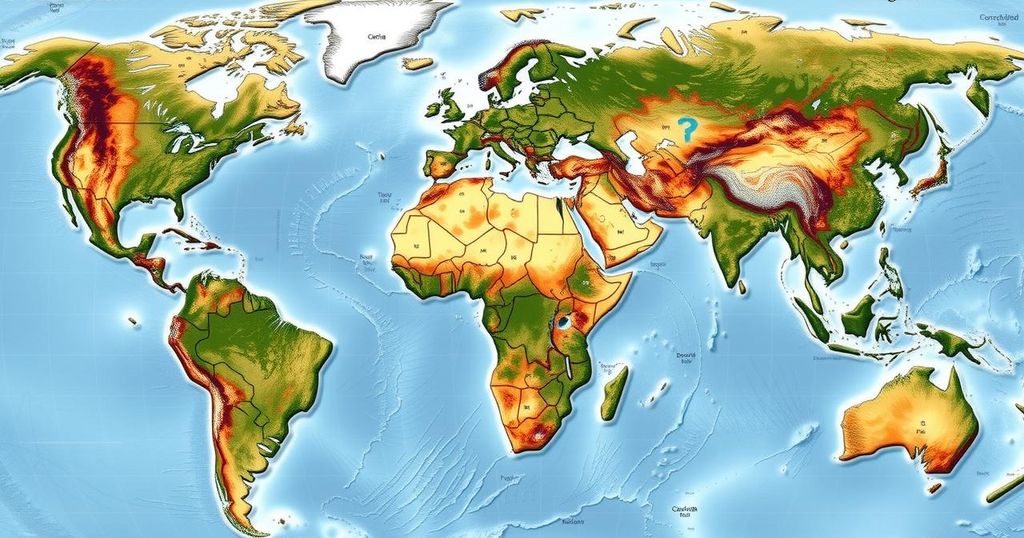Global Weather Hazards Summary for July 3 to July 9, 2025

- ENSO-neutral phase is currently affecting global weather patterns.
- Abnormal dryness is notably impacting central Africa and eastern Central Asia.
- Flooding continues in southwest Nigeria and Kinshasa, DRC due to heavy rainfall.
- Sierra Leone, Liberia, and southern Mali are experiencing significant dry conditions.
- Hot weather is forecasted for northern Mauritania and parts of Algeria.
- Southwestern South Africa is at risk of flooding from anticipated rains.
Current Global Weather Patterns and Effects
Global Weather Conditions and Abnormal Dryness The global weather scenario between July 3 and July 9, 2025, paints a concerning picture. Meteorologists have identified an ENSO-neutral phase currently in effect. Nonetheless, abnormal dryness is especially notable in regions such as central Africa, eastern Central Asia, western Yemen, and northern Hispaniola. These weather anomalies are raising alarms as they may impact agriculture, water supply, and overall livelihoods.
Dryness and Flooding Impacting Africa
Africa’s Varied Weather Hazards Focusing on Africa, dry conditions have taken a firm grip in both the western and eastern Gulf of Guinea regions. In northeastern Nigeria, northern Cameroon, and southern Chad, the persistent drought has significant implications for local communities. Meanwhile, on the flip side, inundation scenarios are unfolding in the Sudd wetlands of northern South Sudan, with flooding also affecting Kinshasa in the Democratic Republic of the Congo (DRC). The Omo Gibe River has overflowed, affecting districts around the Lake Turkana area in southwestern Ethiopia. The plight of areas like western Guinea-Conakry and northwestern Ethiopia is further complicated by the forecast of high flooding risks over the coming week, highlighting the unpredictable nature of the season.
Regional Analysis of Weather Threats
Impending Risks Across Various Regions In West Africa, countries including Sierra Leone, Liberia, eastern Guinea-Conakry, and southern Mali are grappling with a level of dryness that threatens agriculture and water sources. Conversely, South Sudan, southern Sudan, the northeastern DRC, and northwestern Uganda are also experiencing similar dryness conditions. Additionally, parts of northwestern and east-central Ethiopia continue to suffer from dryness caused by below-average rainfall experienced since early June. Meanwhile, the forecast predicts hotter conditions for areas like western Sahara, northern Mauritania, northern Mali, western Algeria, and parts of east-central Ethiopia in the coming week. Lastly, southwestern South Africa may face an elevated risk of flooding due to moderate rainfall being observed and forecasted for the upcoming days.
In summary, the weather conditions from July 3 to July 9, 2025, demonstrate a troubling mix of abnormal dryness and potential flooding across various regions. Africa shows a stark contrast in weather patterns, with some areas suffering from severe drought while others face the threat of flooding. These unpredictable weather changes are likely to have far-reaching consequences on agriculture and local economies, necessitating close monitoring of these conditions.







